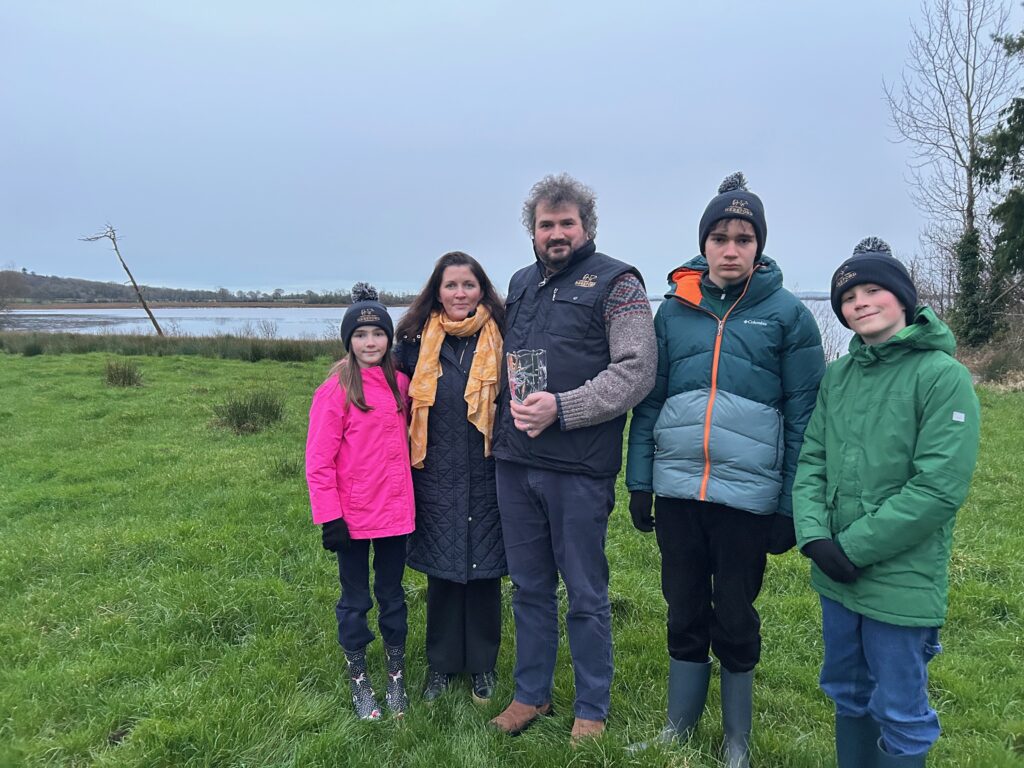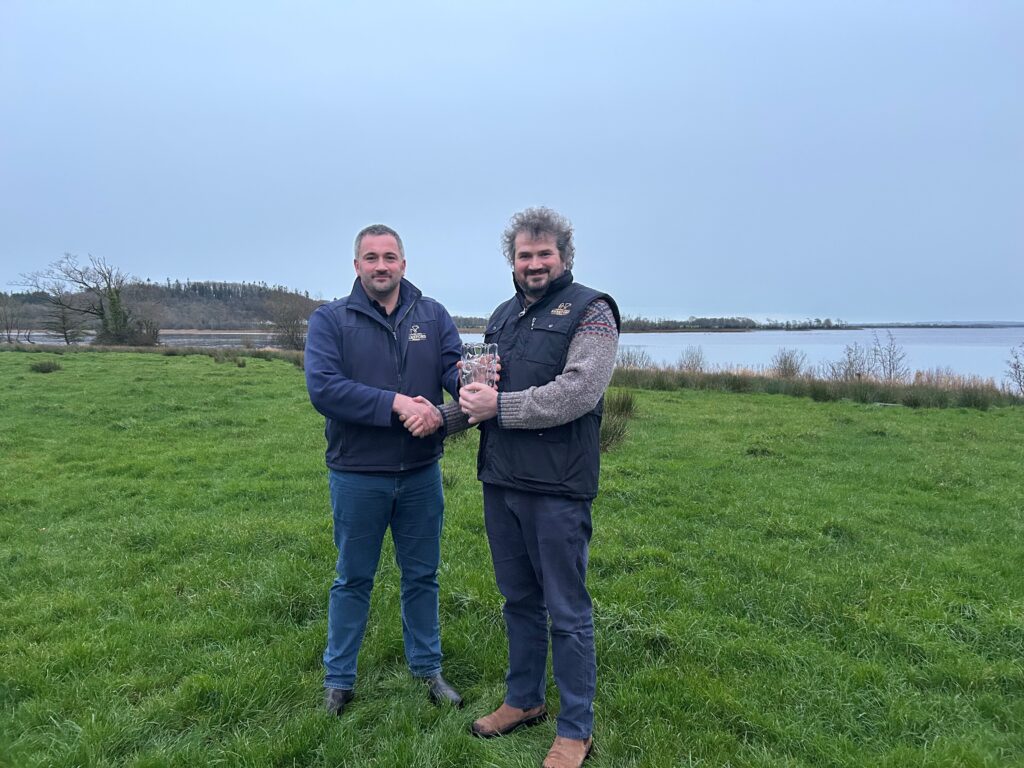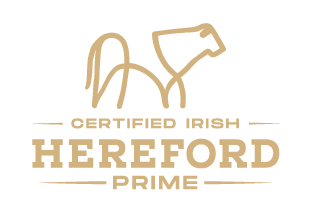Hereford, Heritage, and Innovation: Meet the 2024 Irish Hereford Prime Farmer of the Year
Mervyn Johnston, who farms in Cureen, Lanesborough, Co. Longford on the edge of the River Shannon, has been awarded the prestigious 2024 Irish Hereford Prime Farmer of the Year title. A dedicated part-time farmer, Mervyn runs a suckler-to-beef system dominated by Hereford genetics, with over 95% of his stock being Hereford cattle. He farms alongside his wife, Karen, and their three children – Andrew (15), Elliot (14) and Ruth (10).
Rugby is a major passion in the Johnston household, with Mervyn and his sons having played for Longford RFC. He has also been actively involved in coaching at the underage level and family trips to watch provincial and international games remain a strong tradition.
Mervyn’s earliest farming memory dates back to when he was just four or five years old, fencing a newly reseeded field with his father – an operation that was carried out far less frequently in those days. Now, reseeding is a regular feature of his farming system, with a percentage of the land refreshed annually to maintain productivity.
Balancing his off-farm work commitments, Mervyn opts to use a pedigree Hereford bull, sourced from local breeder William Jones of the Keenagh herd, to run with his Hereford-cross cows instead of using artificial insemination (AI). He also adds to his herd by purchasing Hereford-cross store cattle from Ballymahon Mart, which has experienced a strong resurgence in cattle sales.
All male cattle are finished as steers, except for a select few pedigree bull calves intended for local dairy farmers seeking an easy-calving beef sire for their Friesian cows. Stock are finished on-farm, with strong performance figures recorded over recent years. Steers achieve an average carcass weight of 330kg at 23.5 months, while heifers reach 266kg at 18.5 months. Impressively, almost half of Mervyn’s Hereford-cross heifers and steers grade R for conformation.
As a Bord Bia SBLAS-approved farmer, Mervyn has been supplying procurement manager Frank Clarke at Kepak Athleague since joining Irish Hereford Prime in 2013. Despite the challenges posed by his farm’s heavier, wetter soil type, he typically manages to turn out younger cattle to grass by early March – although 2024 proved an exception due to the difficult spring conditions. Housing generally begins early, with some cows going inside by late September.
A paddock grazing system is in place to maximise grass utilisation and optimise animal performance. To further enhance efficiency and environmental sustainability, Mervyn has transitioned to using Protected UREA as his primary fertiliser, reducing atmospheric nitrogen losses while also offering cost benefits. Silage is cut in late June to coincide with peak growth and ensure the land is at its driest, reducing the risk of machinery related compaction.
Why Hereford?
“Ease of finishing, ease of calving, and above all, the Hereford bonuses at the time of slaughter make it all worthwhile,” says Mervyn.
A key advantage of the breed is its docility and ease of handling – an important factor for Mervyn, who often had to work alone when his children were younger. Calmer, more manageable cattle enhance farm safety and efficiency. The breed also excels in early finishing, achieving strong carcass weights at a young age, which contributes to both farm profitability and environmental sustainability.
“Herefords are a great fit for sustainable farming,” Mervyn notes. “Their quiet nature and strong beef traits also make them increasingly popular with dairy farmers looking for a reliable beef sire.”
Environmental Commitment
In addition to his breeding strategy, Mervyn has embraced agri-environmental initiatives. He is a participant in the ACRES (Agri-Climate Rural Environment Scheme), which aims to address biodiversity decline while financially supporting farmers for implementing conservation measures. Under the scheme, he maintains land designated for breeding waders, leaves sections fallow, and preserves permanent pasture while tracking biodiversity performance.
A portion of his farm falls under ANC (Area of Natural Constraint) classification, reflecting the land’s natural characteristics and supporting the maintenance of local fauna and flora. His involvement in the SCEP scheme (Suckler Carbon Efficiency Programme) further underscores his commitment to improving the environmental sustainability of Ireland’s suckler beef sector.
Mervyn is also part of a pilot environmental programme with Irish Hereford Prime, which collects on-farm data across four key pillars: soil health, soil carbon, hedgerow management and water quality. This initiative is in its early stages but aims to provide valuable technical insights to guide sustainable practices across the sector.
Mervyn and Karen are strong advocates of lifelong learning. Karen is currently pursuing an Innovation for Sustainability professional diploma at UCD, which includes the creation of a sustainability report for a beef farm – an area where their first-hand experience proves invaluable.
Exploring Homeopathy in Farming
The Johnstons have also taken an interest in homeopathy, particularly Karen as a practicing Homeopath uses natural remedies at key stress points throughout the year. They have noted particular success in easing weaning stress for calves and in administering herd-wide treatments during critical periods such as calving, mating and housing. While still a relatively novel practice in Irish agriculture, homeopathy is gaining traction, especially for helping to treat conditions such as mastitis.
With a strong focus on efficiency, sustainability, and animal welfare, Mervyn Johnston’s farming approach demonstrates the best of modern Hereford beef production. His recognition as the 2024 Irish Hereford Prime Farmer of the Year is a testament to his dedication and forward-thinking approach in the sector.


